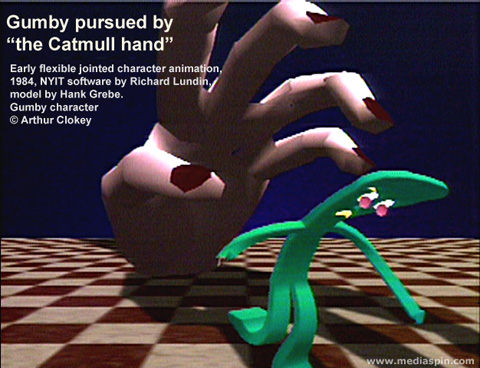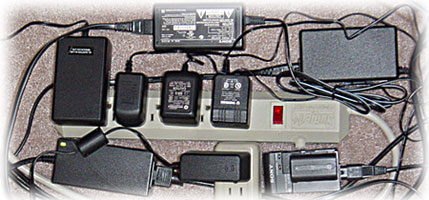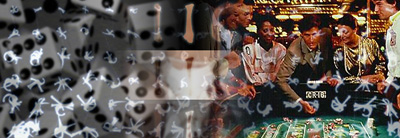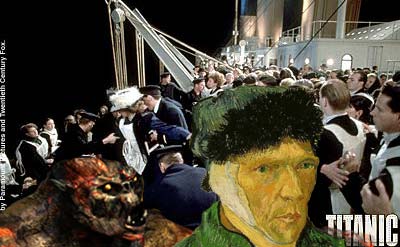General &Media SpinMeister on 06 Apr 2005
History of 3D Digital Animation
In my History of Visual Effects class, instructor Shaun Featherstone poses the question, “Let’s consider which of the following has the most impact upon 3D digital animation… is it Harryhausen’s and Tippett’s Puppet construction? The techniques of Replacement Animation? Or the aspects of Claymation?”
I suppose I was involved in the history of 3D digital animation, having worked at NYIT Computer Graphics Lab in the early 80’s, where many software techniques were just being developed, from paint systems on up.
Around 1983 there were very few if any flexibly jointed character animations. The state of the art was Robert Abel‘s famous “Sexy Robot” can commercial, a stiff jointed character. I was anxious to see flexible joints in characters, and was able to work with a software engineer, Richard Lundin, who animated the famous NYIT Ant robots. We used a model created by Edwin Catmull of his wife’s hand. It had no knuckles or joints, and we tested methods of generating polygons along B-splines created in-between joint nodes. This led to my modeling a Gumby character, on which we ran Dick’s flex software. This was all done long before SoftImage, XSI, Alias, Maya, Lightwave, 3D Studio, etc., etc.
Claymation and the freedom expressed in all of the flexible skinned stop motion puppets gave us a goal to aim for. The digital technique was very different, and in many ways required as much or more patience and determination to achieve.







